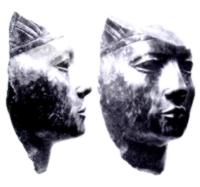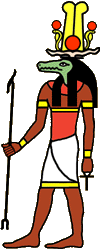

Her father ruled egypt for 45 years. As he was a young man when he came to throne, his heirs were advanced in age when it became their turn to rule. Possibly childless at their death, Amunemhat IV & Ptahneferu paved the way for a sister who would become the last of a proud and vigorous line. She was the last blood.



At the death of her half-brother/husband? and his queen, she found herself with two options. She could marry and become the ancestress of a new dynasty, or take the throne herself. It may be she chose the latter because she was past the child-bearing age. Or, like Hatshepsut some three hundred years later, may have deemed any living princes as not being royal enough. Whatever her reasons, she ruled for 3 years and 10 months. With her death, the 13th Dynasty commenced with a new line of kings that may have been children of a secondary wife of Amunemhat III. Some egyptologist suggest she may have been the wife of Sekhemre Khutowy Amunemhat Sobekhotep I, the founder of Dynasty 13. No evidence for this is to be found.
This monarch, unlike Hatshepsut, was under no dillusions that she could fool anyone about her sex. There is not one statue or drawing depicting her as a man. An uninvestigated pyramid of this era in the fayoum is thought to be hers. It has been described as technically advanced in concept. Had she, like Hetepheres I, Khentkaues I, and Iput I (dyn.4,5,6) decided to marry the next indirect heir, her story might have been a different one and she would not be so often ignored by egyptologists. I believe, when more information becomes available, she will prove a surprise to many!
